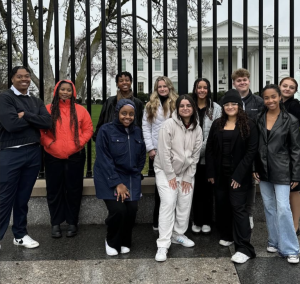Photo by Carolina Casal
Rollins is situated at the banks of beautiful Lake Virginia, but most students have little knowledge of what truly lurks beneath this glimmering landmark.
Were you to issue a survey to all of campus asking students what first drew them to apply and then enroll at Rollins College, it would return a variety of answers. Some might say it’s because campus is close to home. Others would report the athletic or academic scholarships and opportunities they were awarded following exceptional accomplishments in high school. Many students come from long lines of familial legacies that have graduated from Rollins for generations. But one thing on which we all can agree as a secondary (if not primary) cause of enrollment would be the renowned aesthetics of our beautiful lakeside campus/resort.
Rollins College definitely prides itself on such a prime location as part of Lake Virginia’s waterfront property. Virginia is one of five lakes throughout Winter Park that are connected by navigable channels. While outsiders looking in might assume those attending our college would be constantly taking advantage of the privileged lakeside location, many students live in fear of what lingers beneath the dark, abysmal water’s surface – unsure of their safety should they submerge. The consensus seems to be split between those willing to dive in headfirst without hesitation (like members of the waterskiing team, wakeboard club, swimmers, and hobby paddleboarders) and those too petrified to dip a toe.
We at The Sandspur did some digging to uncover the truth about what’s cohabitating with us on Lake Virginia, and if there is a legitimate reason to be afraid. What turned up in interviews with students and faculty alike were several confirmed sightings of alligators wading through the water. While many of these gators would be considered rather puny, senior men’s swim team member and leisurely fisherman, Andrew Johnson, tells a tale of one particular nighttime fishing expedition during which he witnessed a “large mass of water, like a wave” turn out to be an alligator approximately eight or nine feet in length. The student fisherman additionally reports seeing alligator gar (a carnivorous species of fish whose name stems from its long, slender snout lined with two rows of sharp teeth) on other fishing outings.
That being said, Johnson still doesn’t hesitate when given the chance to swim in the lake – once having swam the distance between a peacock-infested area known as the Genius Preserve and our campus shoreline. Those unaware of this preserve, held in trust by the Morse Foundation, should take note that the typical means of transportation to and from by water is in a canoe or other aquatic vessel.
But what else exists apart from gators and gar that poses a potential threat? Associate Professor and Chair to the Department of Biology, Kathryn Sutherland, says she would consider the water snakes to be the most dangerous inhabitants of the lake. When working with students in the shallow depths just offshore, Professor Sutherland shows her budding biologists how to take caution with their approach, in order to avoid stepping on or near a snake that may not be immediately visible. However, the biology professor does not believe anyone should be afraid of Lake Virginia, after a long history of working with students to collect samples from the lake without a single alarming incident to report.
Lastly, but potentially most lethally, we have the brain-eating amoebas. Although that may sound terrifying in and of itself, everyone should be aware of how rare and uncommon it truly is to fall victim to these deadly amoebas. Firstly, they only show up when lake water reaches extreme high temperatures, while remaining considerably still or undisturbed. They are only around toward the end of summer. Secondly, even if you were to go in the water while amoebas are present, it is highly unlikely that they will in fact enter through your nasal passages to munch on brain matter. There is a specifically improbable way in which your head must make impact with the water for that to occur.
Though it may come across that Lake Virginia is somewhat of a formidable deathtrap, students like wake-boarder, Alex Wright, feel strongly about a misconception out there concerning the dangers of the deep. He and the wakeboard club he played an integral role in forming here at Rollins College have not run into any problems with their near daily activities on the water. This misconception could be due largely in part to changes occurring in the lake over the last half-century. Representatives of the environmental studies and biology departments can recall a time when the lake was so clear you could see straight down to the bottom of it from a canoe atop its center.
In recent years, run-off from the city of Winter Park has given Lake Virginia’s water an excess of nutrients (particularly nitrogen and phosphorous), which cause that ominous dark tint – clouding visibility beneath its surface. There was once a time when Rollins offered a scuba-diving class that took place in the lake. This was back when an aquatic weed known as hydrilla had not yet overgrown to its current state of un-navigable proportions, and the water was still crystal clear. Today, Rollins is situated on the coast of a very different Lake Virginia.
It stands to reason that some students may always abstain from activities on our lake due to a certain level of trepidation. But if you are one of those wise enough to overcome such fears, feel free to take advantage of privileges like canoe-renting, sailing classes, and paddleboard yoga. As for this particular canoe-capsizing Sandspurian, plunging into Lake Virginia will forever appeal like a bi-weekly bath does to a feral cat.







Be First to Comment